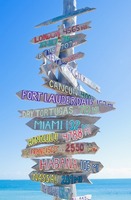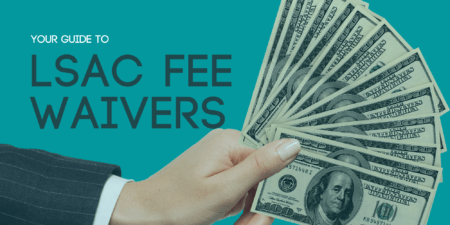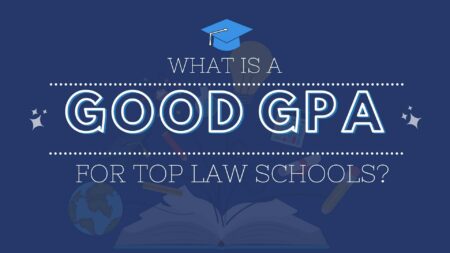
For those finalizing their list of potential law schools, we wanted to do a “Where Should I Apply to Law School” post to help keep you on top of recent trends that might affect where you apply. Particularly, we’ll discuss how the ongoing drop in applications to law school might influence your applications strategy.
First, we cover some application fundamentals. If you’re familiar with the basics, skip ahead to “Strategies.”
Reach, Safety, and Target Schools
Usually, one should apply to some “reach” schools, a larger amount of “target schools”, and a handful of “safety schools.” “Reach” schools are ones where your numbers (LSAT and GPA) are low compared to the median numbers at that school, “target” schools are those where you numbers are about median for that school, and “safety” schools are ones where your numbers are well above the median.
Now, I realize sometimes one of your numbers will be a little above the median and another will be a little below. In these cases, your LSAT score is the better guidepost, so use that to determine what category you place the school in.
If anyone needs more clarification on this process, feel free to ask, anonymously or otherwise, in the comments. We are happy to assess whether a certain school is a reach, target, or safety for you.

The Typical Approach
Unlike applying to get into an undergraduate university, where matters are often less certain, with law schools your numbers are a very strong predictor of where you will or won’t get in. This means that if simply getting in somewhere is your sole concern, you may not have to apply to a ton of schools.
I’ve read that the average person applies to 6 law schools. That’s a very reasonable number if you are applying to law schools that serve just one locality. In that situation, you might be applying to two reaches, two targets, and two safety schools.
If you have numbers that might get you into T14 schools or those ranked just below, you are generally better off applying to more schools so as retain every potentially desirable option. A common approach for those with a high 160s or 170+ LSAT score is to blanket the T14 and also apply to a couple of safety schools in the Top 25.
Likewise, those who are looking at lower schools but are considering two or more different areas of the country should generally be applying to more than 6 schools.
“Splitters” (those with a big difference in their numbers, such as a high LSAT score and a low GPA or vice versa) and URM applicants are typically advised to apply to a larger range of schools, as their application cycles tend to be less predictable. We discuss high LSAT/low GPA splitters more in our post on getting into law school with a low GPA.
Law School Application Strategies
With the typical approach as your guidepost, there are some modifications you might want to make:
The median LSAT and GPA numbers have fallen considerably in the past 5 years or so. While they are still at historically low levels, we’re beginning to see them increase. While It’s still true that this is a better time than ever to get into schools that might have been considered reach schools for your numbers previously. However, I want to urge some caution for students eager to go to the best-ranked school they get into, especially if it will cost you more.
Remember that sliding medians reflect the fact that fewer and fewer people are applying to law school. Fewer students are applying as a result of a growing belief that law school is a less valuable investment now than it was in the past. This means that getting into a more prestigious school now does not necessarily mean you are better off than you would be had you gotten into a slightly lower ranked school back when employment prospects were better.
What’s more, some schools are sliding much more than others. Be wary when a school is much, much easier to get into than it was 3 years ago (for a closer look at once such case, see our post: the kind of law school not to go to right now).
What I am encouraging you to do is disregard prestige and analyze schools’ costs and benefits as dispassionately as possible. All else being equal, always try to go to the school that gives you the best employment prospects relative to the cost. With this goal in mind, apply to a broad range of schools to increase your chances of getting good scholarship offers.
Maximizing Your Chances For a Scholarship
Typically, your odds are better of getting scholarship offers at target and safety schools. I suggest that we abandon the term ‘safety schools’ altogether and start calling them “scholarship mining schools” to put a better spin on it. This is because I worry that too many people are averse to going to a ‘safety’ school when in reality it’s commonly a student’s best option. Certainly, right now, almost everyone should be applying to several schools that they have really strong numbers for. Here’s why:
Scholarship offers are somewhat less predictable than acceptances, even when you are well above a school’s medians. As a simple matter of probability, applying to a lot of schools ups your chance to get a good scholarship offer. As importantly, more offers put you in a better position to negotiate aggressively for scholarships.
We wrote recently that it’s especially important right now to recognize your enhanced bargaining position. Law school applicants are enjoying a buyers market — schools want you to come, badly. As a result, many law schools have greatly increased the amount of scholarship money they are offering. Even if you don’t take direct advantage of it, a scholarship offer from a school you don’t want to go to might be leveraged into a similar offer from a school you do want to attend. For more advice on negotiating for scholarships read our post on it here.
Reaching For The Top
Certainly, do reach for higher ranked schools where job prospects remain very strong. Employment prospects at t14 schools remain fairly strong, especially at the top 6 schools (Harvard, Yale, Stanford, Columbia, Chicago, and NYU). These schools may be worth it to attend even at a substantially higher price tag than schools below. The drawback of course, is that applicant numbers and LSAT/GPA medians haven’t fallen very much for these schools. As we reported recently, they remain very hard to get into.
That said, they have gotten slightly less selective (Harvard for example now has a 16% acceptance rate, a big jump from their 11% acceptance rate in 2010). If you have numbers that give you even a slight chance, it’s worthwhile to try for the top.
We hope this post will help you maximize your chances of a good result if you are applying this cycle. If you have any questions at all about where to apply feel free to ask in the comments below.




7 Comments
Hi, I’m Christina. I am Interested in Majoring In Law, what is the Best way to go about it? I am wanting to Major in a Fee Different things as well. How do I go about Applying to Law Schools, is that where the LSATs come into play?
Thanks for the Help.
Hi! Thanks for a really helpful post. My question is in regards to what schools I should consider in the “target” range. My GPA is 3.98 (and a bit higher in LSAC with a couple A+’s), and an LSAT of 167/168 (took twice). In your opinion, would schools like UVA or UPenn be considered “target” or “reach” for me, as their LSATs are a point or two higher than mine?
Really appreciate any comments you can provide, thanks! 🙂
Hi, I too have, like the user mentioned above, a 3.62 LSAC gpa and a recent December LSAT of 169. (My only other previous score being a 161). What would you say my chances are at Duke and Cornell?? I would also like to mention i sent my application in by the second week of january (if you think that affects my chances at all)
Hi,
I have a 169 LSAT and a 3.62 UGPA, I’m from Texas so UT would be a great choice for me — what are my chances for UT. Also should apply to t14?
Your chances at UT are pretty great. Nothing in life is a sure thing, but UT is pretty close to a sure thing for you. Good numbers!
Definitely apply to the lower t14 schools and maybe a couple of big reaches that you really like. UChicago loves students from Texas. There is a great Texas community there, so consider them as one of your big reach schools.
Simply blanketing the t14 wouldn’t be a bad idea. It incrementally increases your chances of a bite any time you add a school.
Hello! This is extremely helpful. Thanks so much. I’m curious what you think my chances are at a few specific schools. I just took the Oct. LSAT and haven’t gotten my score, but am anticipating I got a 164/165, which was way below where I was practicing (I blew it on two of the logic games). I’m planning to retake in December and am hopeful I could get at least a 168/169, if not closer to 170/171. My GPA was a 3.6. What do you think my chances are at Georgetown, Berkeley, and UVA?
I know all of these would be reaches for me with my GPA, but I’m curious if/how much a decent LSAT score (169/170) would improve my chances. Is it worth applying?
Thanks again!
Hera
It’s certainly worth applying. I would throw out an application even with your current numbers. That said, get a LSAT score that reflects your practice average (and try to boost it even). Get a 169/170 and you are likely in a some t-14, maybe a few. It still puts you on the low end numbers wise for a lot of them. Good soft factors might help.
UVA will be tough unless you get a 170 or better. Berkeley your chances are better with a 169 but still not great — 170 is the magic number there again. Georgetown a 167 or better will likely do the trick.